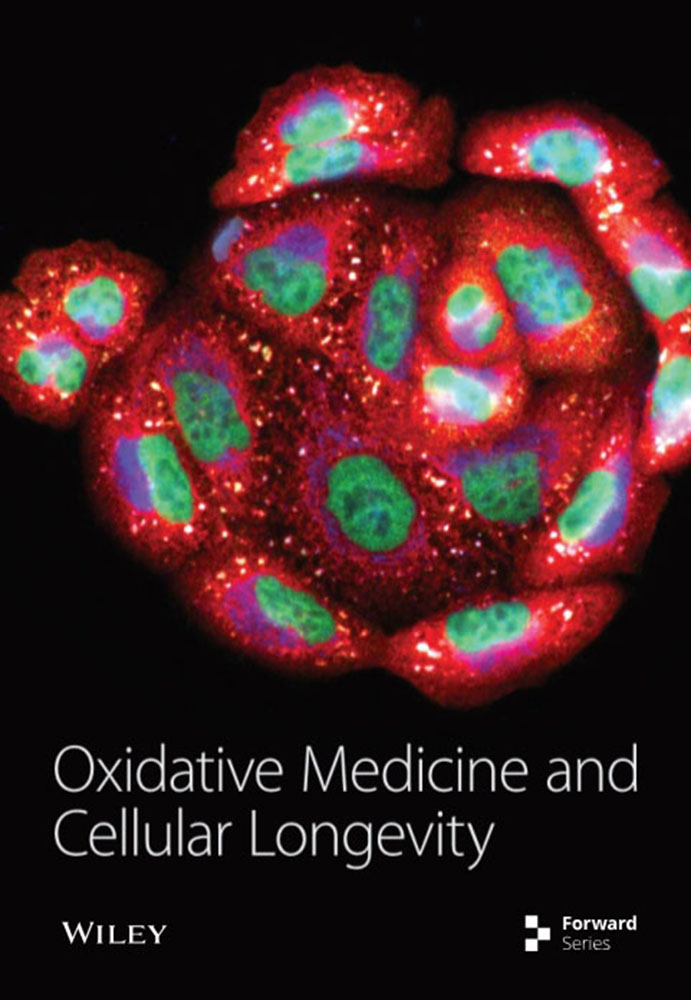lncRNA-AK046375通过隔离miR-491-5p上调金属硫蛋白-2,减轻创伤性脑损伤后脑氧化应激负担
2区 生物学
Q1 Biochemistry, Genetics and Molecular Biology
引用次数: 10
摘要
我们之前发现,创伤性脑损伤(TBI)会引起小鼠大脑皮层长链非编码RNA (lncRNA)水平的显著扰动,而lncRNA- ak046375是TBI后变化最显著的lncRNA之一。在体外和体内成功构建lncRNA-AK046375过表达和敲低模型。在培养的原代皮层神经元和星形胶质细胞中,lncRNA-AK046375分离miR-491-5p,从而增强金属硫蛋白-2 (MT2)的表达,从而改善氧化诱导的细胞损伤。此外,上调lncRNA-AK046375可促进C57BL/6小鼠脑外伤后运动、学习和记忆功能的恢复,其机制可能与改善小鼠脑内细胞凋亡、抑制氧化应激、减少脑水肿、减轻血脑屏障紧密连接蛋白的缺失有关。因此,我们得出结论,lncRNA-AK046375通过隔离miR-491-5p来增强MT2的表达,最终增强抗氧化活性,从而改善脑外伤后的神经功能缺陷。本文章由计算机程序翻译,如有差异,请以英文原文为准。
The lncRNA-AK046375 Upregulates Metallothionein-2 by Sequestering miR-491-5p to Relieve the Brain Oxidative Stress Burden after Traumatic Brain Injury
We previously discovered that traumatic brain injury (TBI) induces significant perturbations in long noncoding RNA (lncRNA) levels in the mouse cerebral cortex, and lncRNA-AK046375 is one of the most significantly changed lncRNAs after TBI. lncRNA-AK046375 overexpression and knockdown models were successfully constructed both in vitro and in vivo. In cultured primary cortical neurons and astrocytes, lncRNA-AK046375 sequestered miR-491-5p, thereby enhancing the expression of metallothionein-2 (MT2), which ameliorated oxidative-induced cell injury. In addition, upregulated lncRNA-AK046375 promoted the recovery of motor, learning, and memory functions after TBI in C57BL/6 mice, and the underlying mechanism may be related to ameliorated apoptosis, inhibited oxidative stress, reduced brain edema, and relieved loss of tight junction proteins at the blood-brain barrier in the mouse brain. Therefore, we conclude that lncRNA-AK046375 enhances MT2 expression by sequestering miR-491-5p, ultimately strengthening antioxidant activity, which ameliorates neurological deficits post-TBI.
求助全文
通过发布文献求助,成功后即可免费获取论文全文。
去求助
来源期刊
CiteScore
13.20
自引率
0.00%
发文量
1274
审稿时长
3-8 weeks
期刊介绍:
Oxidative Medicine and Cellular Longevity is a unique peer-reviewed, Open Access journal that publishes original research and review articles dealing with the cellular and molecular mechanisms of oxidative stress in the nervous system and related organ systems in relation to aging, immune function, vascular biology, metabolism, cellular survival and cellular longevity. Oxidative stress impacts almost all acute and chronic progressive disorders and on a cellular basis is intimately linked to aging, cardiovascular disease, cancer, immune function, metabolism and neurodegeneration. The journal fills a significant void in today’s scientific literature and serves as an international forum for the scientific community worldwide to translate pioneering “bench to bedside” research into clinical strategies.

 求助内容:
求助内容: 应助结果提醒方式:
应助结果提醒方式:


